
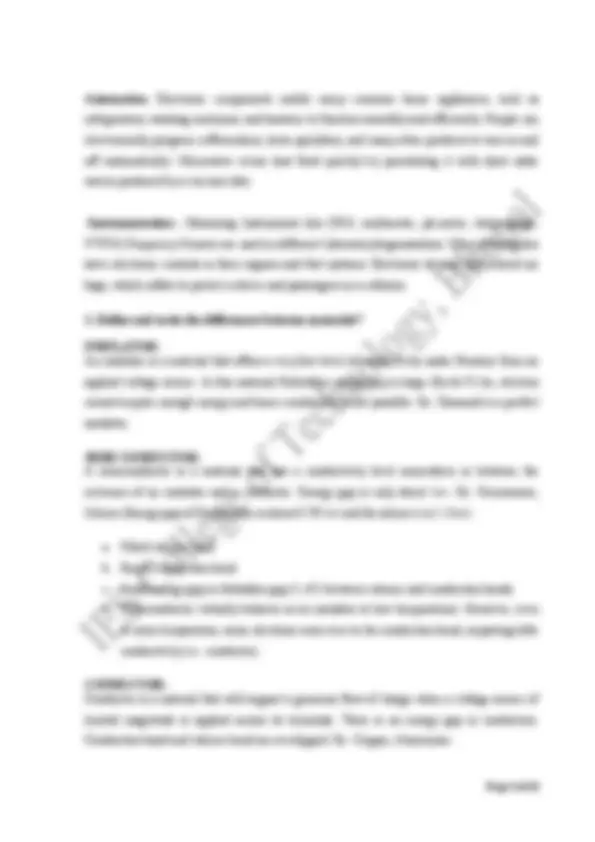
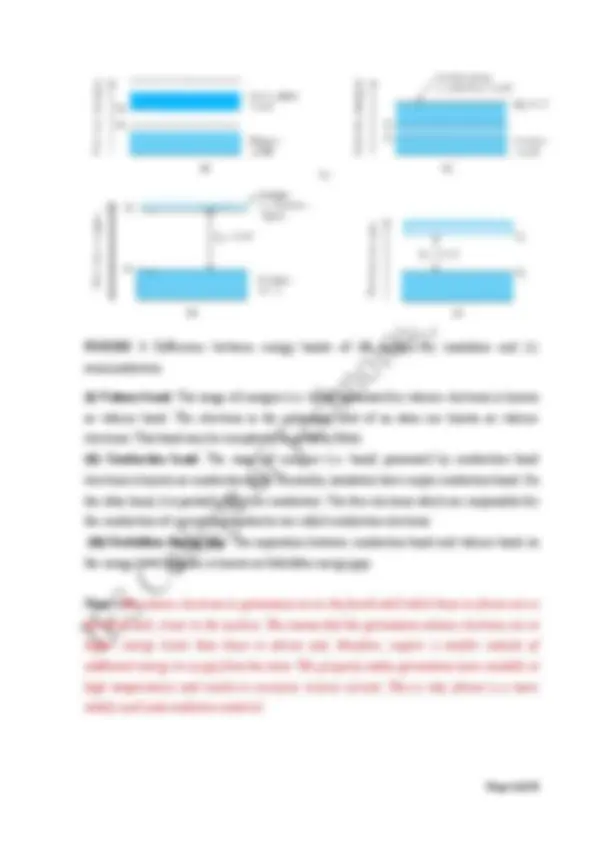
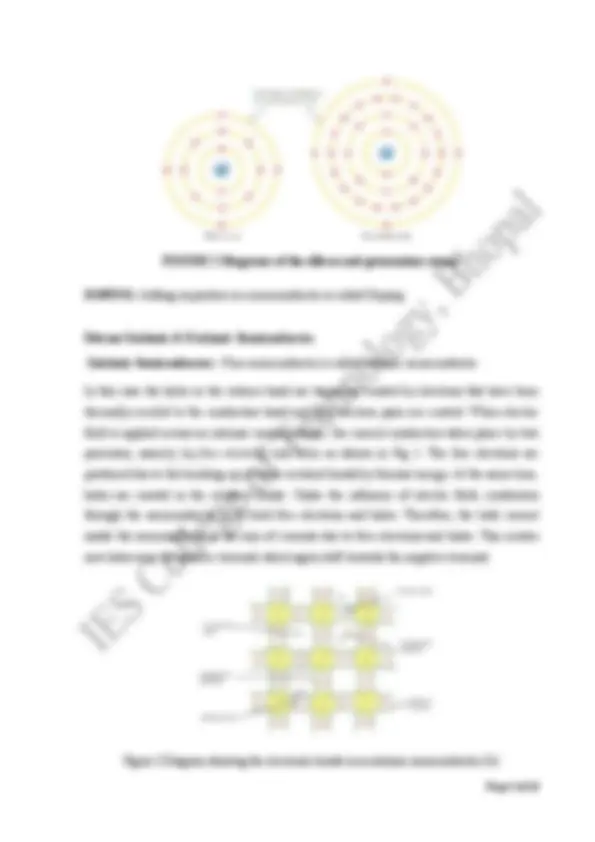
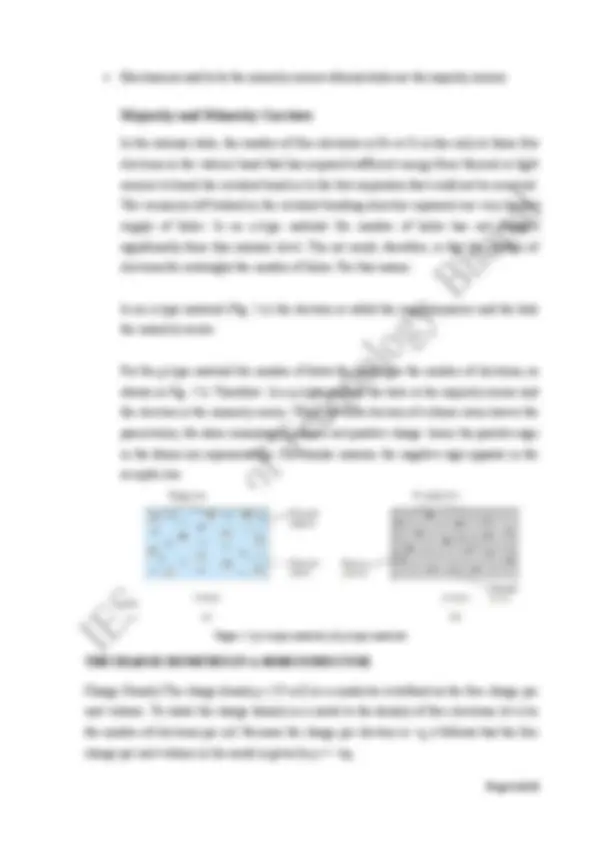
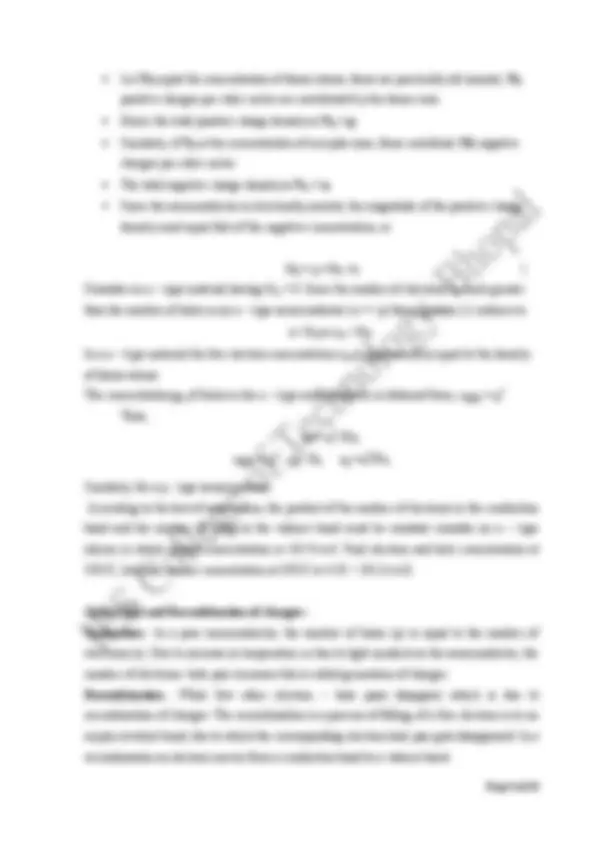
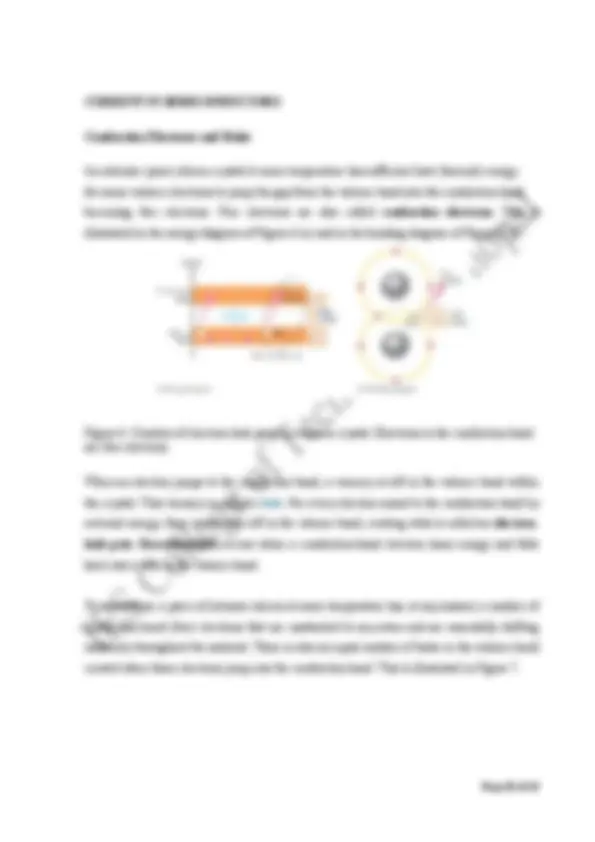
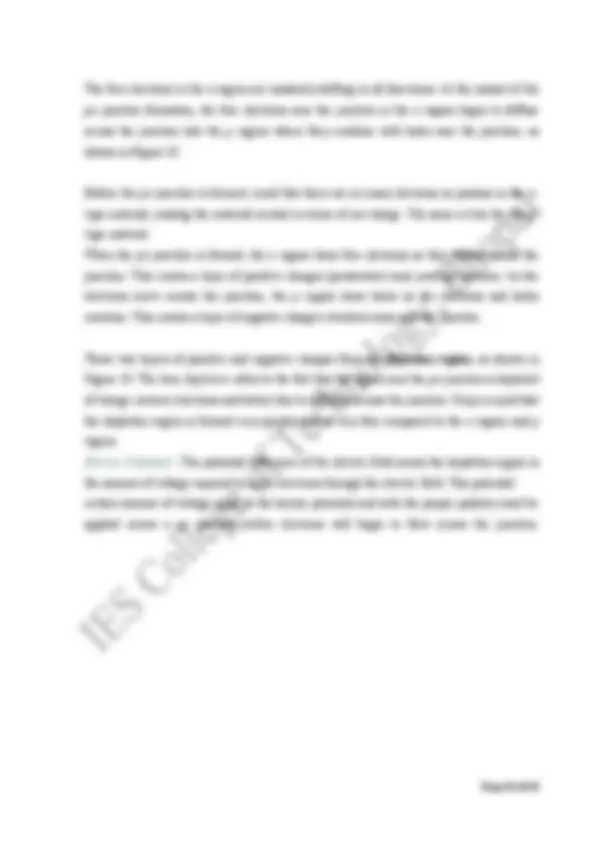
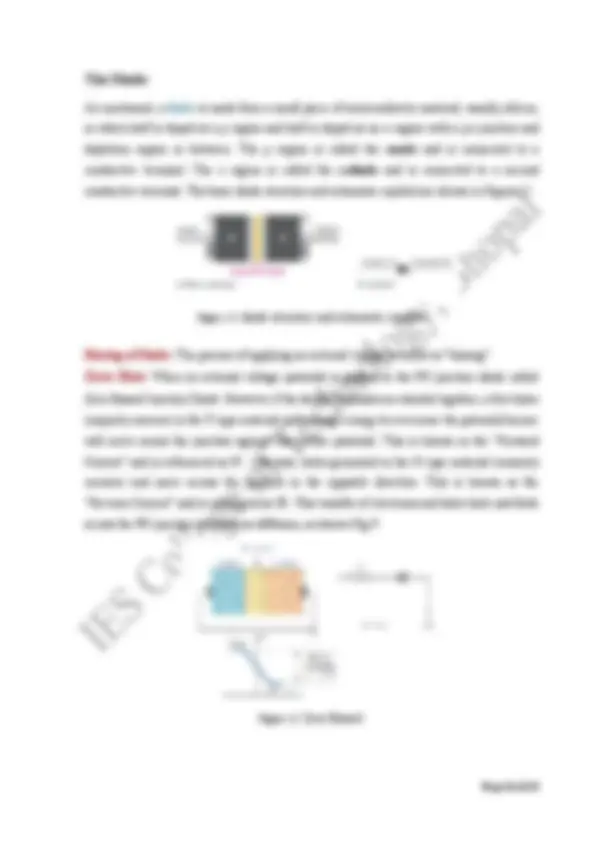
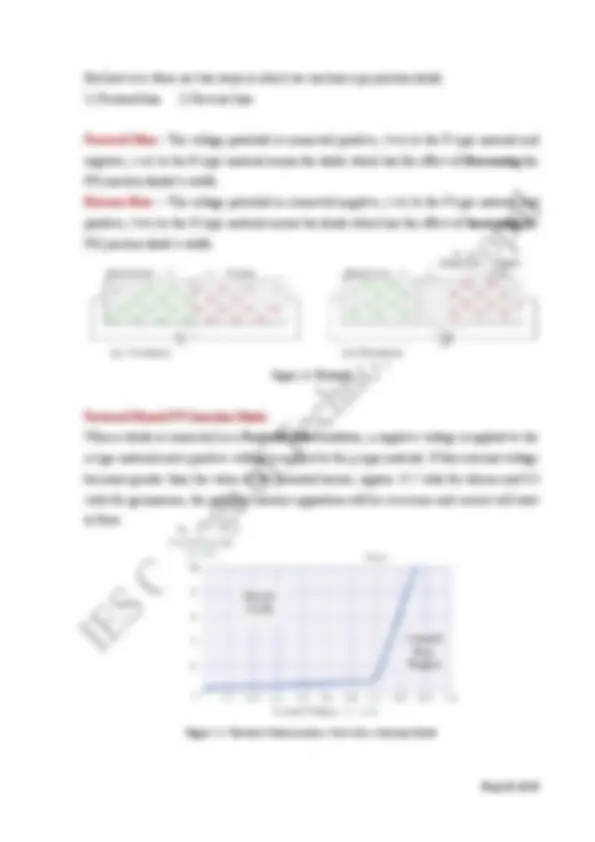
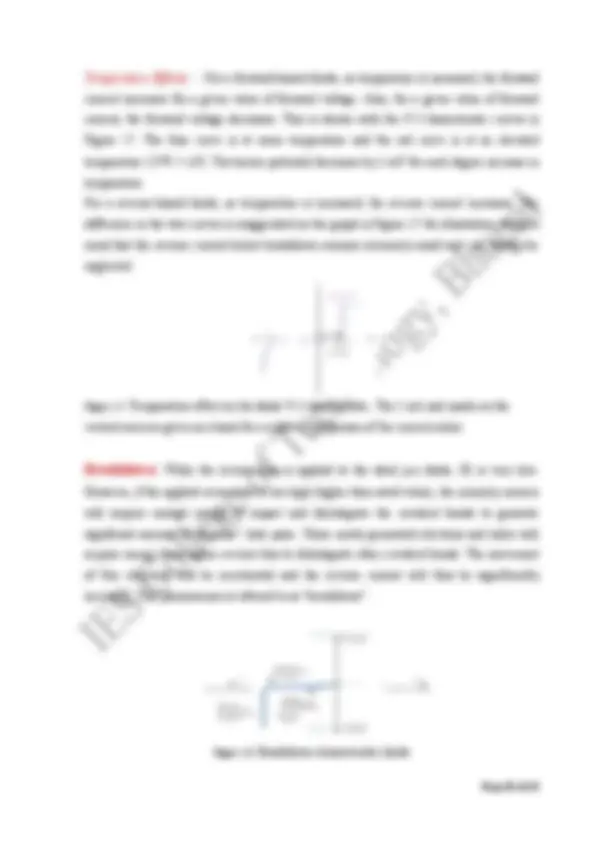

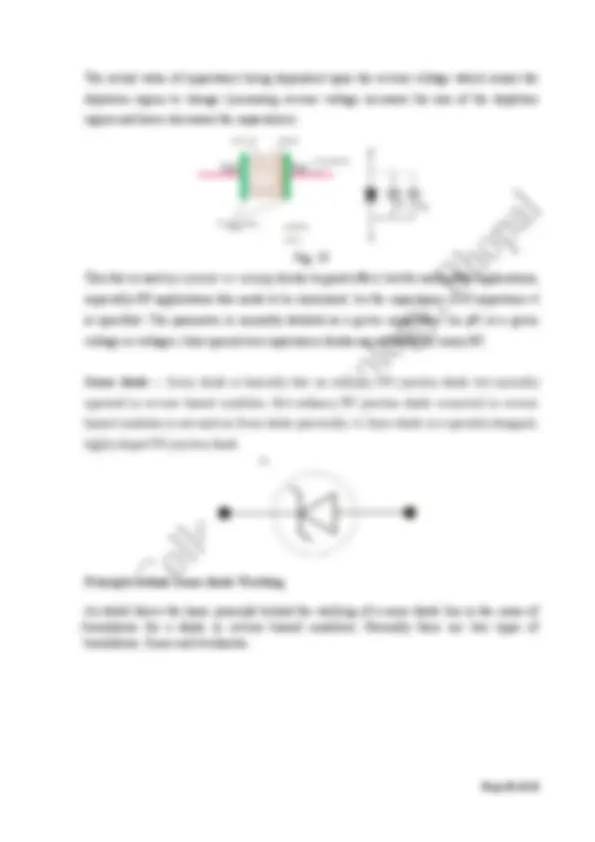


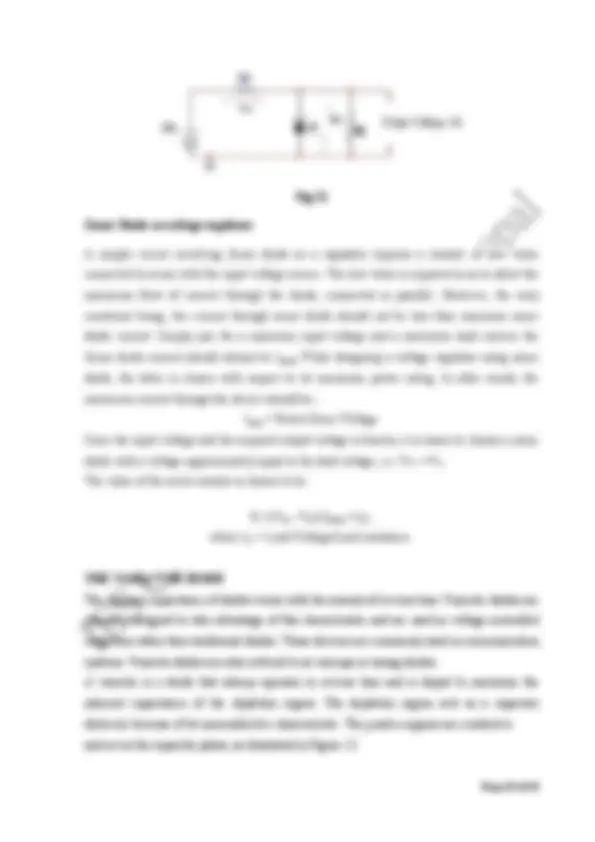
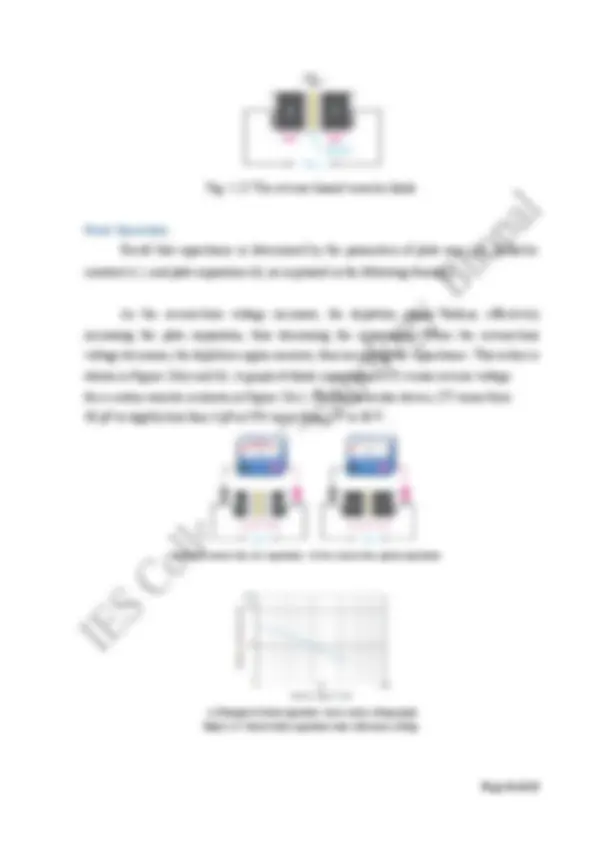
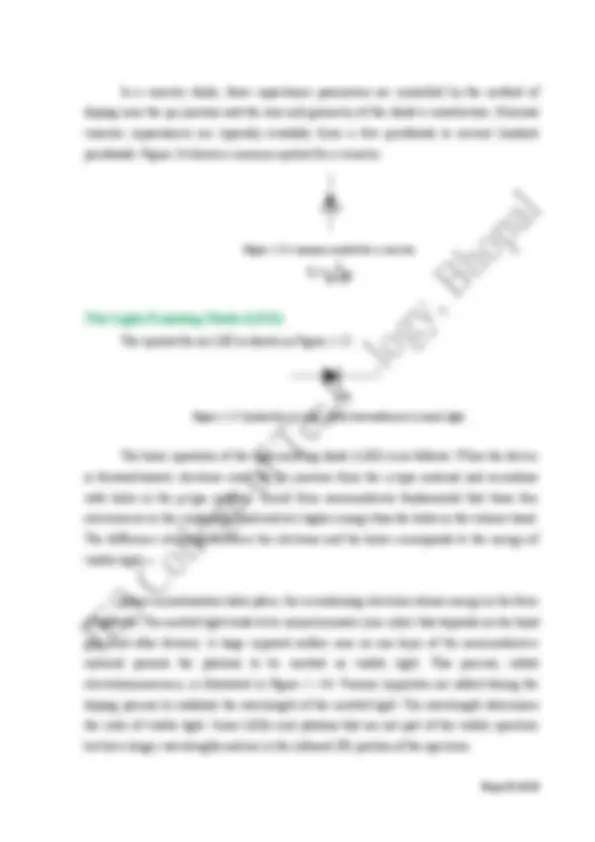

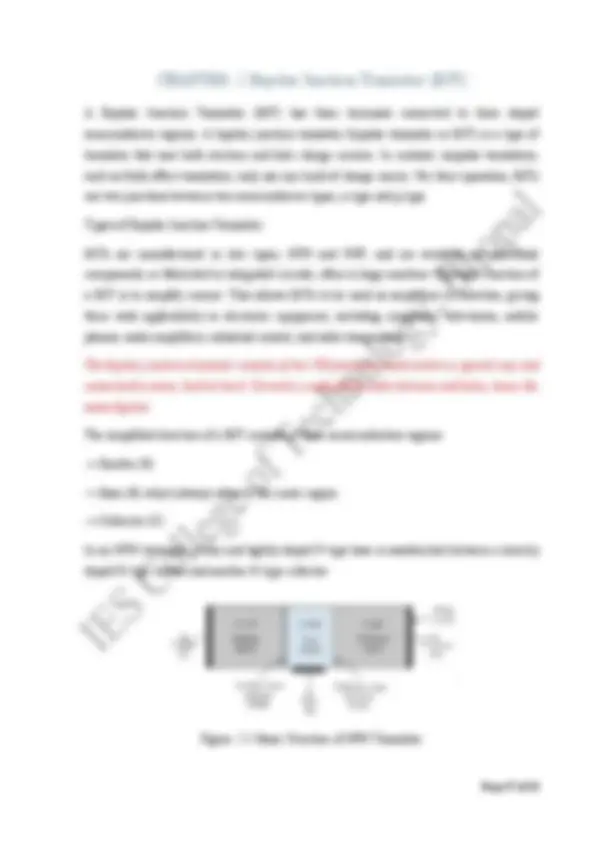
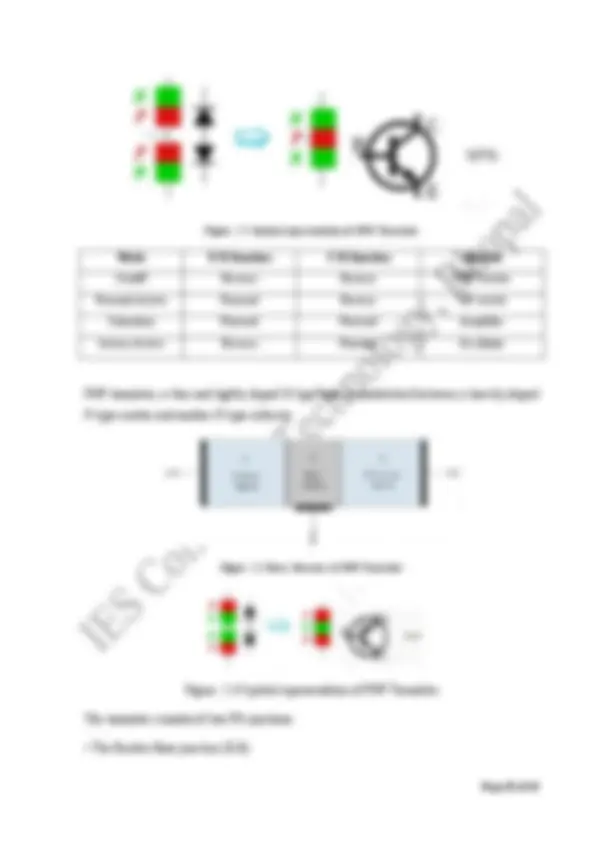
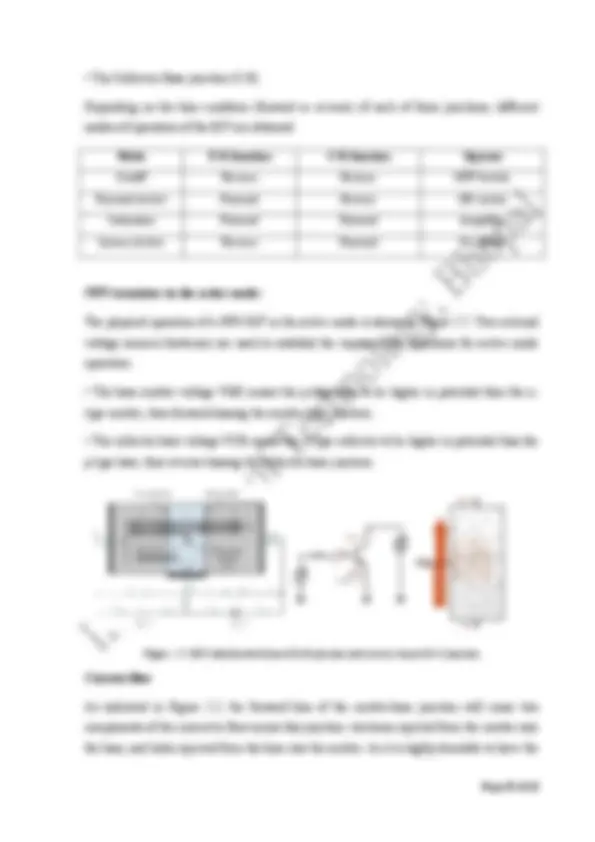
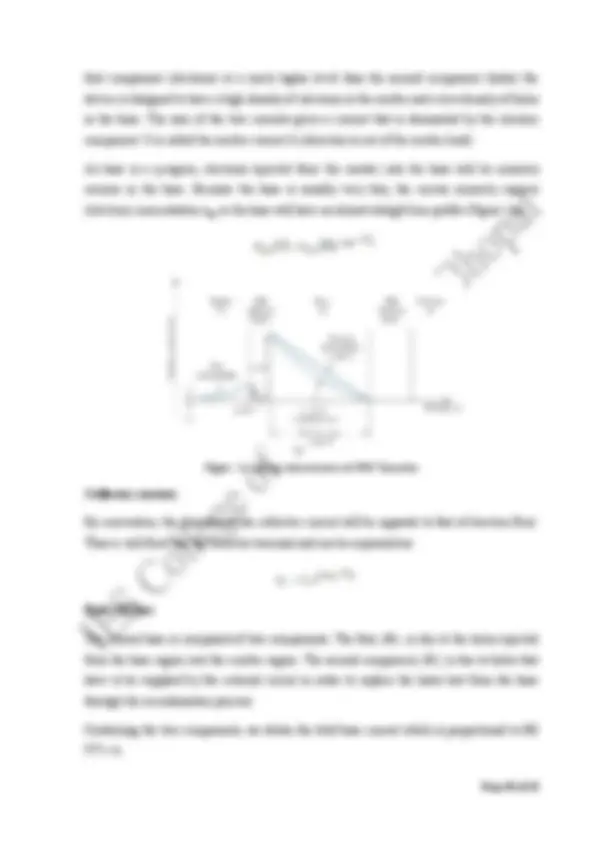
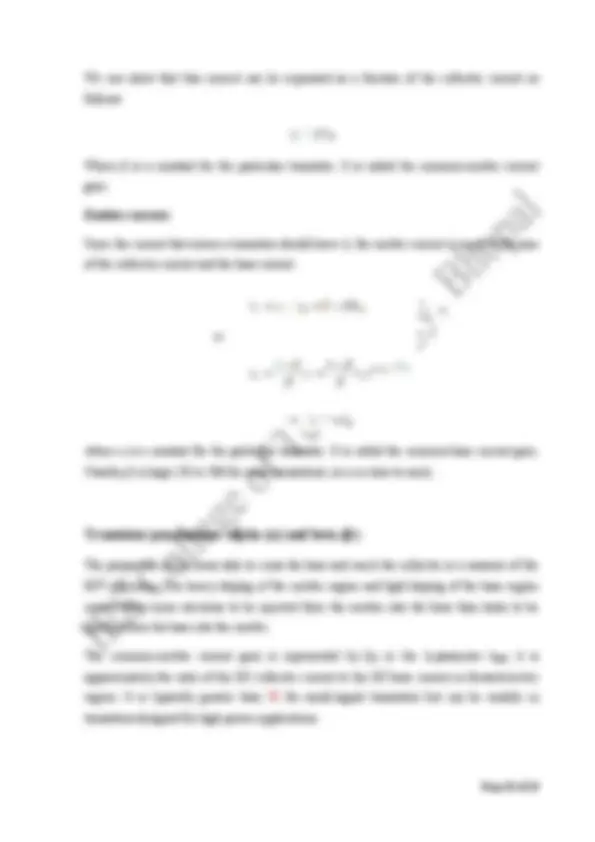
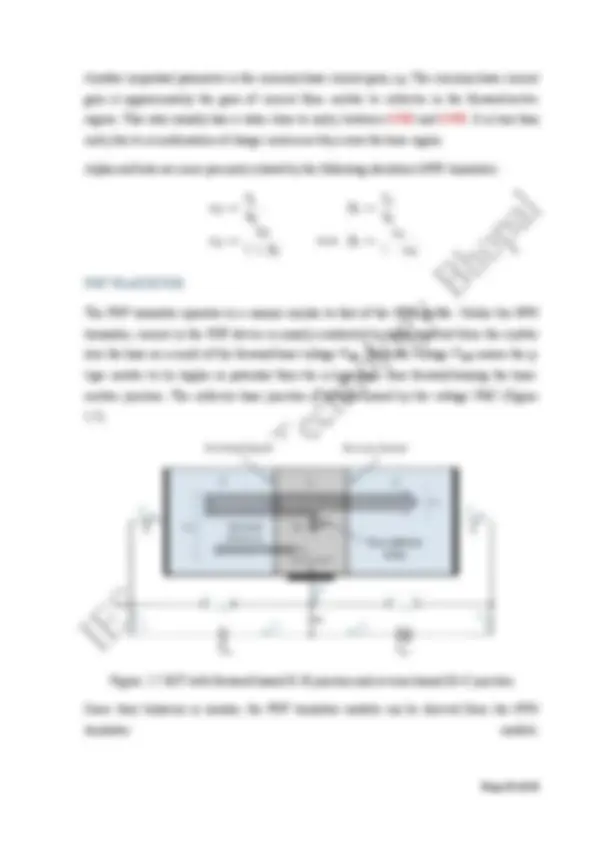

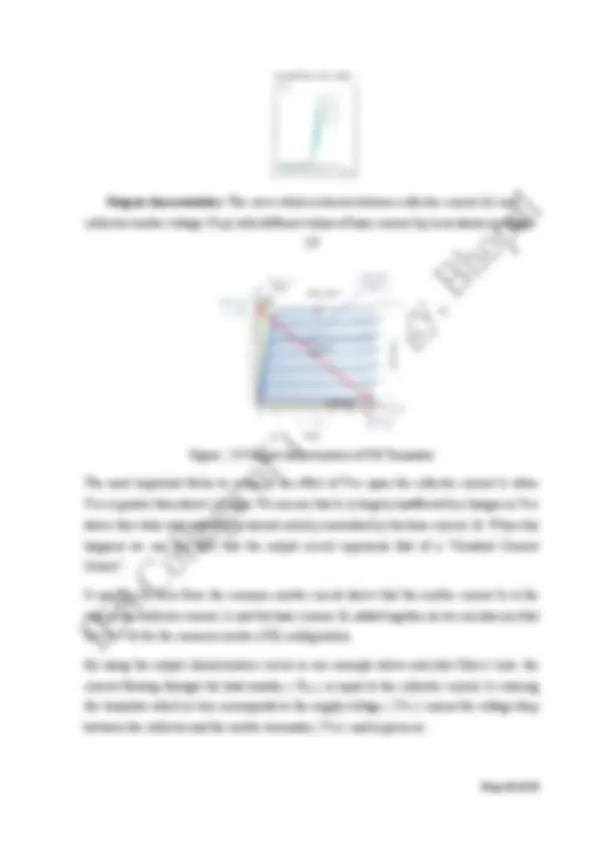
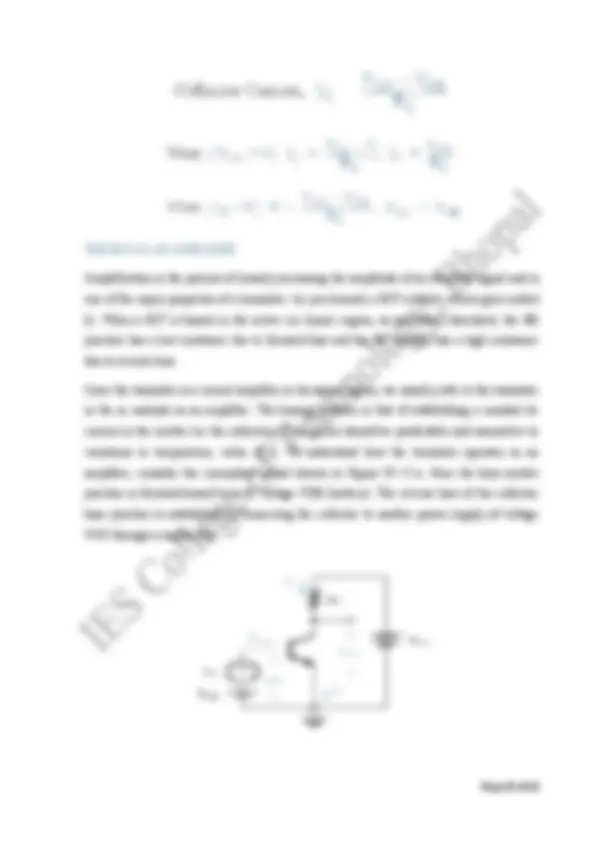
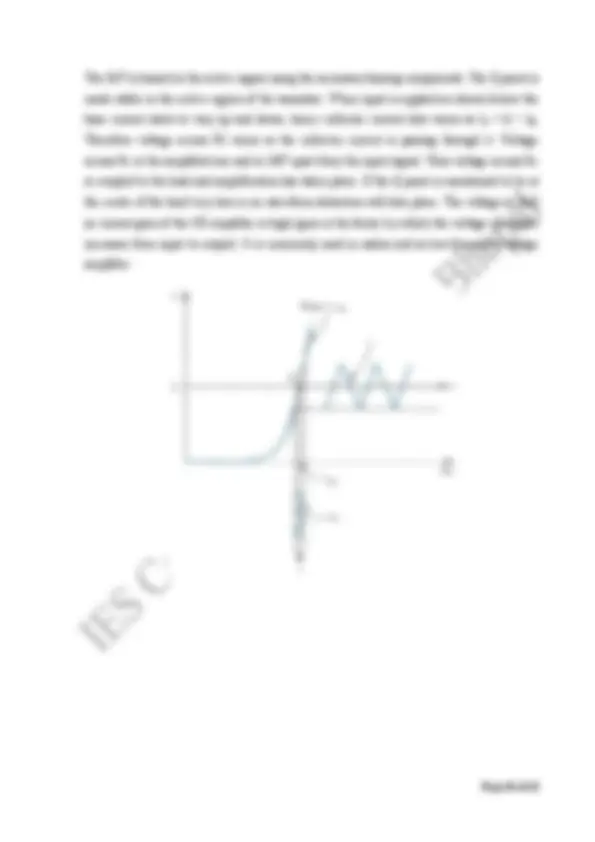


Study with the several resources on Docsity

Earn points by helping other students or get them with a premium plan


Prepare for your exams
Study with the several resources on Docsity

Earn points to download
Earn points by helping other students or get them with a premium plan
Community
Ask the community for help and clear up your study doubts
Discover the best universities in your country according to Docsity users
Free resources
Download our free guides on studying techniques, anxiety management strategies, and thesis advice from Docsity tutors
Definition Electronics: The branch of engineering which deals with current conduction through a Vacuum or Gas or Semiconductor is known as Electronics. An electronic device is that in which current flows through a vacuum or gas or semiconductor. This control of electrons is accomplished by devices that resist, carry, select, steer, switch, store, manipulate, and exploit the electron.
Typology: Lecture notes
1 / 36

This page cannot be seen from the preview
Don't miss anything!





























BE – 3 th^ Semester
Definition Electronics: The branch of engineering which deals with current conduction through a Vacuum or Gas or Semiconductor is known as Electronics. An electronic device is that in which current flows through a vacuum or gas or semiconductor. This control of electrons is accomplished by devices that resist, carry, select, steer, switch, store, manipulate, and exploit the electron.
Applications of Electronics:
Consumer Electronics include products like – Audio Systems, Video Systems, TV (Television), Computer, Laptop, Digital Camera, DVD Players, Home and Kitchen Appliances, GPS, Mobiles Phones etc.
Communication: - Electronic communication systems connect people around the world. Using telephones, Internet and computers, people in different countries communicate almost instantly. Radios transmit sounds and televisions transmit sounds and pictures great distances. Cellular telephones enable a person to call another person. Within seconds, fax machines send and receive copies of documents over telephone lines/Satellite.
Information processing:- Scientists, artists, students, government and business workers, and hobbyists at home all rely on computers, Internet to handle huge amounts of information quickly and accurately. Computers solve difficult mathematical problems, maintain vast amounts of data, create complex simulations, and perform a multitude of other tasks that help people in their everyday lives.
Medicine and research:- Include product like X-ray machines ECG (Electrocardiogram) use radiation to take images of bones and internal organs. Radiation therapy, or radiotherapy, uses X-rays and other forms of radiation to fight cancer. Many hearing-impaired people depend on hearing aids to electrically amplify sound waves.
Computers: - Computers and other electronic instruments provide scientists and other researchers with powerful tools to better understand their area of study. Computers, for example, help scientists design new drug molecules, track weather systems, and test theories about how galaxies and stars develop. Electron microscopes use electrons rather than visible light to magnify specimens 1 million times or more.
FIGURE 1 Difference between energy bands of (a) metals, (b) insulators and (c) semiconductors.
(i) Valence band. The range of energies (i.e. band) possessed by valence electrons is known as valence band. The electrons in the outermost orbit of an atom are known as valence electrons. This band may be completely or partially filled. (ii) Conduction band. The range of energies (i.e. band) possessed by conduction band electrons is known as conduction band. Generally, insulators have empty conduction band. On the other hand, it is partially filled for conductors. The free electrons which are responsible for the conduction of current in a conductor are called conduction electrons. (iii) Forbidden energy gap. The separation between conduction band and valence band on the energy level diagram is known as forbidden energy gap.
Note:- The valence electrons in germanium are in the fourth shell while those in silicon are in the third shell, closer to the nucleus. This means that the germanium valence electrons are at higher energy levels than those in silicon and, therefore, require a smaller amount of additional energy to escape from the atom. This property makes germanium more unstable at high temperatures and results in excessive reverse current. This is why silicon is a more widely used semiconductive material.
FIGURE 2 Diagrams of the silicon and germanium atoms.
DOPING: Adding impurities in a semiconductor is called Doping.
Discuss Intrinsic & Extrinsic Semiconductor.
Intrinsic Semiconductor:- Pure semiconductor is called intrinsic semiconductor.
In this case the holes in the valence band are vacancies created by electrons that have been thermally excited to the conduction band and hole-electron pairs are created. When electric field is applied across an intrinsic semiconductor, the current conduction takes place by two processes, namely; by free electrons and holes as shown in Fig 2. The free electrons are produced due to the breaking up of some covalent bonds by thermal energy. At the same time, holes are created in the covalent bonds. Under the influence of electric field, conduction through the semiconductor is by both free electrons and holes. Therefore, the total current inside the semiconductor is the sum of currents due to free electrons and holes. This creates new holes near the positive terminal which again drift towards the negative terminal.
Figure 3 Diagram showing the electronic bonds in an intrinsic semiconductor (Si)
Figure 3: Pentavalent impurity atom in a silicon crystal structure. An antimony (Sb) impurity atom is shown in the center. The extra electron from the Sb atom becomes a free electron.
(ii) p -type Semiconductor
When a small amount of trivalent impurity is added to a pure semiconductor, it is called p- type Semiconductor.
The addition of trivalent impurity provides a large number of holes in the semiconductor. Typical examples of trivalent impurities are gallium , indium, boron etc. Such impurities which produce p -type semiconductor are known as acceptor impurities because the holes created can accept the electrons fig 4.
Figure 4: Trivalent impurity atom in a silicon crystal structure. A boron (B) impurity atom is shown in the center.
Electrons are said to be the minority carriers whereas holes are the majority carriers.
In the intrinsic state, the number of free electrons in Ge or Si is due only to those few electrons in the valence band that has acquired sufficient energy from thermal or light sources to break the covalent bond or to the few impurities that could not be removed. The vacancies left behind in the covalent bonding structure represent our very limited supply of holes. In an n-type material the number of holes has not changed significantly from this intrinsic level. The net result, therefore, is that the number of electrons far outweighs the number of holes. For this reason:
In an n-type material (Fig. 5 a) the electron is called the majority carrier and the hole the minority carrier.
For the p-type material the number of holes far outweighs the number of electrons, as shown in Fig. 5 b. Therefore: In a p-type material the hole is the majority carrier and the electron is the minority carrier. When the fifth electron of a donor atom leaves the parent atom, the atom remaining acquires a net positive charge: hence the positive sign in the donor-ion representation. For similar reasons, the negative sign appears in the acceptor ion.
Figure 5 (a) n -type material; (b) p -type material.
THECHARGE DENSITIES IN A SEMICONDUCTOR
Charge Density The charge density ρ ( C/ m3) in a conductor is defined as the free charge per unit volume. To relate the charge density in a metal to the density of free electrons, let n be the number of electrons per m3. Because the charge per electron is −q, it follows that the free charge per unit volume in the metal is given by ρ = −nq
Conduction Electrons and Holes
An intrinsic (pure) silicon crystal at room temperature has sufficient heat (thermal) energy for some valence electrons to jump the gap from the valence band into the conduction band, becoming free electrons. Free electrons are also called conduction electrons. This is illustrated in the energy diagram of Figure 6 (a) and in the bonding diagram of Figure 6 (b).
Figure 6: Creation of electron-hole pairs in a silicon crystal. Electrons in the conduction band are free electrons.
When an electron jumps to the conduction band, a vacancy is left in the valence band within the crystal. This vacancy is called a hole. For every electron raised to the conduction band by external energy, there is one hole left in the valence band, creating what is called an electron- hole pair. Recombination occurs when a conduction-band electron loses energy and falls back into a hole in the valence band.
To summarize, a piece of intrinsic silicon at room temperature has, at any instant, a number of conduction-band (free) electrons that are unattached to any atom and are essentially drifting randomly throughout the material. There is also an equal number of holes in the valence band created when these electrons jump into the conduction band. This is illustrated in Figure 7.
Figure 7: Electron-hole pairs in a silicon crystal. Free electrons are being generated continuously while some recombine with holes.
Electron and Hole Current
When a voltage is applied across a piece of intrinsic silicon, as shown in Figure 8, the thermally generated free electrons in the conduction band, which are free to move randomly in the crystal structure, are now easily attracted toward the positive end. This movement of free electrons is one type of current in a semi conductive material and is called electron current.
Another type of current occurs in the valence band, where the holes created by the free electrons exist. Electrons remaining in the valence band are still attached to their atoms and are not free to move randomly in the crystal structure as are the free electrons. However, a valence electron can move into a nearby hole with little change in its energy level, thus leaving another hole where it came from. Effectively the hole has moved from one place to another in the crystal structure, as illustrated in Figure 9. Although current in the valence band is produced by valence electrons, it is called hole current to distinguish it from electron current in the conduction band.
Figure 8: Electron current in intrinsic silicon is produced by the movement of thermally generated free electrons.
Generation of an electron – hole pair
Recombination of an electron with hole
The free electrons in the n region are randomly drifting in all directions. At the instant of the pn junction formation, the free electrons near the junction in the n region begin to diffuse across the junction into the p region where they combine with holes near the junction, as shown in Figure 10.
Before the pn junction is formed, recall that there are as many electrons as protons in the n - type material, making the material neutral in terms of net charge. The same is true for the p - type material. When the pn junction is formed, the n region loses free electrons as they diffuse across the junction. This creates a layer of positive charges (pentavalent ions) near the junction. As the electrons move across the junction, the p region loses holes as the electrons and holes combine. This creates a layer of negative charges (trivalent ions) near the junction.
These two layers of positive and negative charges form the depletion region, as shown in Figure 10. The term depletion refers to the fact that the region near the pn junction is depleted of charge carriers (electrons and holes) due to diffusion across the junction. Keep in mind that the depletion region is formed very quickly and is very thin compared to the n region and p region. Barrier Potential:- The potential difference of the electric field across the depletion region is the amount of voltage required to move electrons through the electric field. This potential certain amount of voltage equal to the barrier potential and with the proper polarity must be applied across a pn junction before electrons will begin to flow across the junction.
As mentioned, a diode is made from a small piece of semiconductor material, usually silicon, in which half is doped as a p region and half is doped as an n region with a pn junction and depletion region in between. The p region is called the anode and is connected to a conductive terminal. The n region is called the cathode and is connected to a second conductive terminal. The basic diode structure and schematic symbol are shown in Figure 12.
Figure 12: diode structure and schematic symbol.
Biasing of Diode: The process of applying an external voltage is called as “biasing”.
Zero Biased Junction Diode. However if the diodes terminals are shorted together, a few holes (majority carriers) in the P-type material with enough energy to overcome the potential barrier will move across the junction against this barrier potential. This is known as the “Forward Current” and is referenced as IF.. Likewise, holes generated in the N-type material (minority carriers) and move across the junction in the opposite direction. This is known as the “Reverse Current” and is referenced as IR. This transfer of electrons and holes back and forth across the PN junction is known as diffusion, as shown Fig 9.
Figure 13: Zero Biased.
The application of a forward biasing voltage on the junction diode results The depletion layer becoming very thin and narrow which represents a low impedance path through the junction thereby allowing high currents to flow. The point at which this sudden increase in current takes place is represented on the static I-V characteristics curve above as the “knee” point.
The Effect of Forward Bias on the Depletion Region : - As more electrons flow into the depletion region, the number of positive ions is reduced. As more holes effectively flow into the depletion region on the other side of the pn junction, the number of negative ions is reduced. This reduction in positive and negative ions during forward bias causes the depletion region to narrow, as indicated in Figure 16.
Figure 16: Effect of Forward Bias on the Depletion Region
When a diode is connected in a Reverse Bias condition, a positive voltage is applied to the N- type material and a negative voltage is applied to the P-type material. The positive voltage applied to the N-type material attracts electrons towards the positive electrode and away from the junction, while the holes in the P-type end are also attracted away from the junction towards the negative electrode. Thus The depletion layer grows wider due to a lack of electrons and holes and presents a high impedance path, almost an insulator. The result is that a high potential barrier is created thus preventing current from flowing through the semiconductor material. A high resistance value to the PN junction and practically zeros current flows through the junction diode with an increase in bias voltage. However, a very small leakage current does flow through the junction which can be measured in microamperes, (μA ).
Note:- Increase in the Depletion Layer due to Reverse Bias
Figure 16 Reverse Biasing Voltage
Reverse Characteristics Curve for a Junction Diode
Junction capacitance
In a PN junction diode two types of capacitance take place. They are,
Transition capacitance (CT) Diffusion capacitance (CD)
All PN junction diodes exhibit a junction capacitance. The depletion region is the dielectric spacing between the two plates which are effectively formed at the edge of the depletion region and the area with majority carriers. Any variation of the charge within a p-n diode with an applied voltage variation yields a capacitance which must be added to the circuit model of a p-n diode. The capacitance associated with the charge variation in the depletion layer is called the junction capacitance, while the capacitance associated with the excess carriers in the quasi-neutral region is called the diffusion capacitance CD. Expressions for the capacitances are obtained by calculating the change in charge for a change in applied voltage, or:
Where CT = Transition capacitance dQ = Change in electric charge dV = Change in voltage
The transition capacitance can be mathematically written as,
CT = ε A / W
Where,
ε = Permittivity of the semiconductor A = Area of plates or p-type and n-type regions W = Width of depletion region
The actual value of capacitance being dependent upon the reverse voltage which causes the depletion region to change (increasing reverse voltage increases the size of the depletion region and hence decreases the capacitance).
Fig. 19 This fact is used in varactor or varicap diodes to good effect, but for many other applications, especially RF applications this needs to be minimised. As the capacitance is of importance it is specified. The parameter is normally detailed as a given capacitance (in pF) at a given voltage or voltages. Also special low capacitance diodes are available for many RF.
Zener diode :- Zener diode is basically like an ordinary PN junction diode but normally operated in reverse biased condition. But ordinary PN junction diode connected in reverse biased condition is not used as Zener diode practically. A Zener diode is a specially designed, highly doped PN junction diode.
Principle behind Zener diode Working
As stated above the basic principle behind the working of a zener diode lies in the cause of breakdown for a diode in reverse biased condition. Normally there are two types of breakdown- Zener and Avalanche.